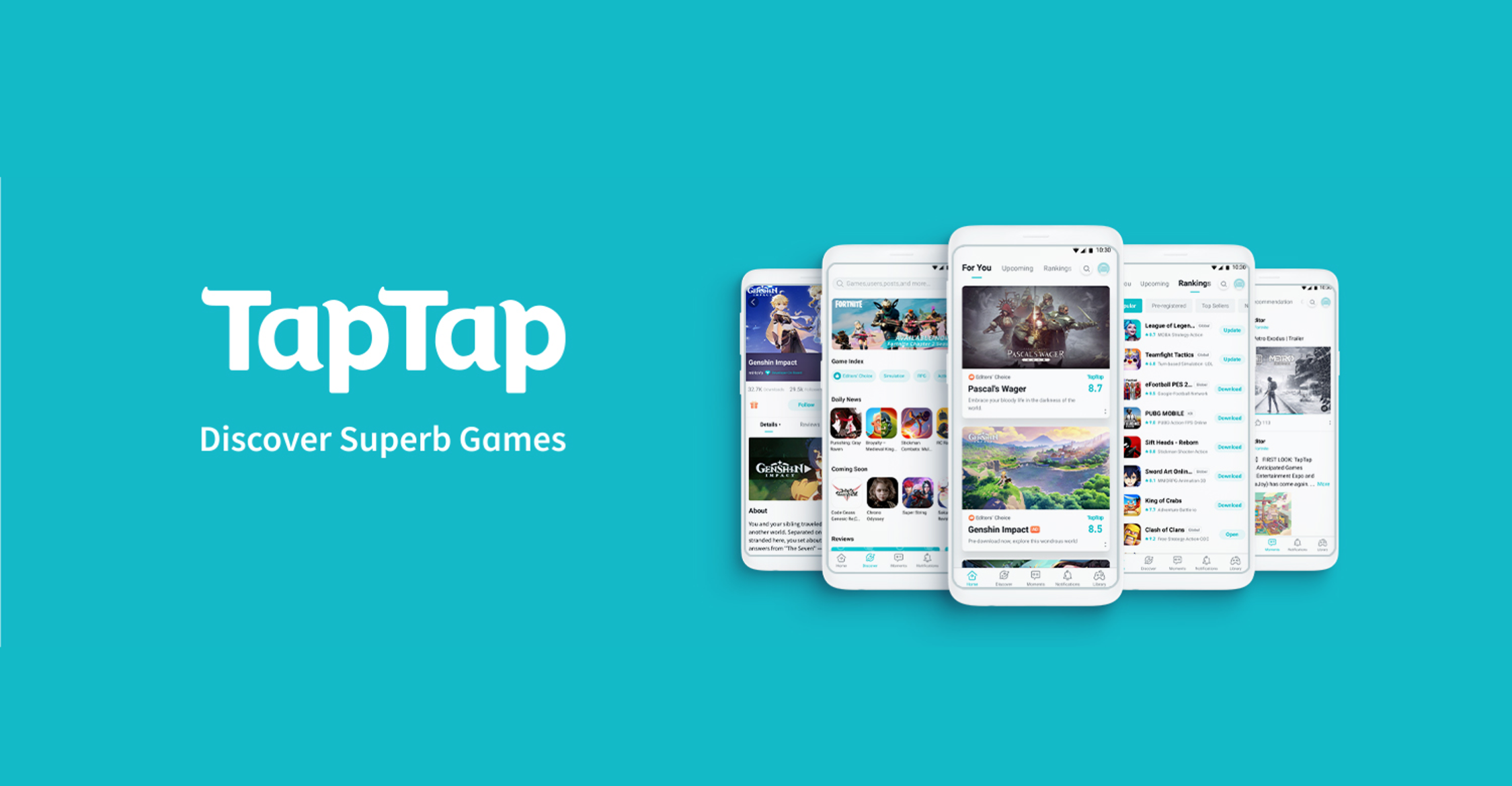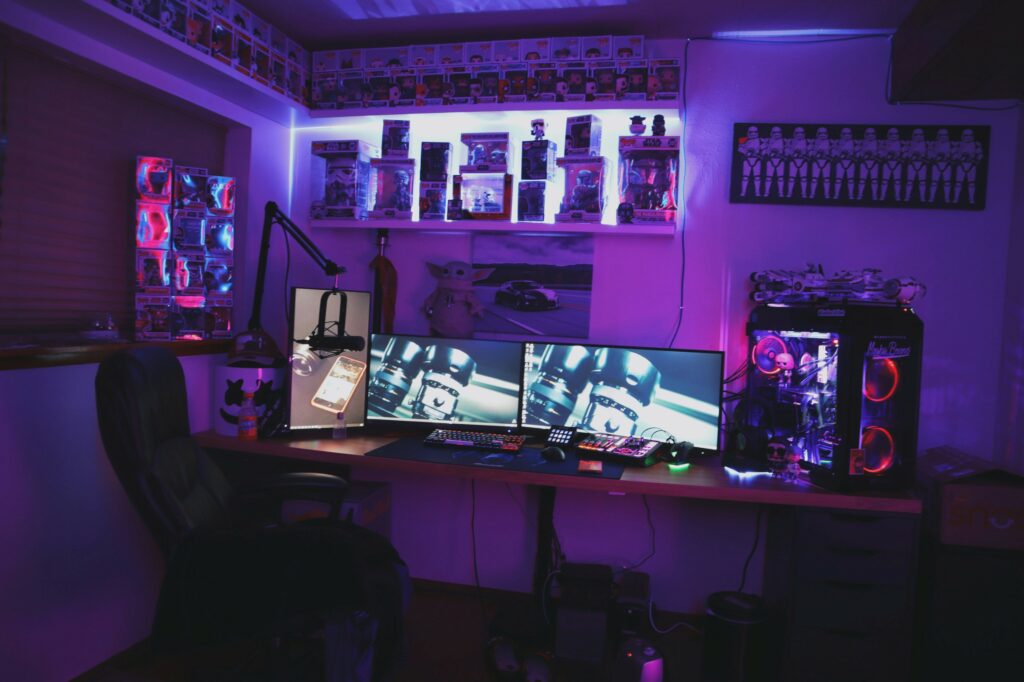Hi Everyone. We’re setting aggressive growth targets for the remainder of the year — hoping to 3x in size — and we need your help! We’d love it if you can share this newsletter with a few people this week. Tell your League of Legends, Valorant, or Fortnite squads to subscribe. Share it with your colleagues at work. Twitter, FB groups, LinkedIn, Discord. That friend who’s sorta kinda into the business of games? You should tell them about Master The Meta, too!
We’d super appreciate your help here. 🙏
We’re also in the process of making our referral system more robust. If you haven’t already, subscribe to MTM to get access to our referral system. If you refer two new subscribers you'll be invited to our private Master The Meta Discord community - which, thanks to our growing team, we'll soon do more cool stuff with. Plus, if you refer five subscribers, you'll be invited to our quarterly Q&As where you can ask our team any pressing questions. Our first Q&A will kick off in the next couple weeks, so make sure to spread the word soon.
Shoutout to those of you who referred your friends and coworkers in the past — you rule!
#1: Supercell’s Clash Trio
Supercell’s new game announcements are always a spectacle. Last week, they announced not one, not two, but (for the first time ever) three new games through this video. Players were excited about release dates, industry folk were curious about the games, and analysts were speculative of why a three game release makes sense. Three sentences from the video shed light on these questions.
The first explains why: “With these new projects, we’ll expand the Clash universe in ways you’ve never seen before, introducing new genres and new gameplays into the Clash world.” It’s no secret that Supercell’s revenues have been declining for the past three years ($1.6B → $1.56B → $1.48B). Juicing revenues through live operations of their top three titles — Clash of Clans, Clash Royale and Brawl Stars — can only go so far. While Supercell continues to attempt new IP games (Rush Wars), announcing three new Clash IP games signals that Supercell is exploring a portfolio-wide “new games through IP expansion” strategy. Hay Day Pop was the first hint. While many companies with widely recognizable IPs do this, there is some novelty to Supercell’s approach.
Enter the second sentence: “We felt there is an opportunity to create totally new experiences around the Clash characters and provide new challenges for the players in a fresh way.” For any IP expansion strategy, finding both genre-IP fit and gameplay-IP fit are critical. By centering these new games around the midcore-affluent Clash IP, Supercell will likely see a strong genre-IP fit as the company expands into three new midcore genres: Clash Quest (Puzzle RPGs), Clash Mini (Auto-battlers), and Clash Heroes (Action RPGs). Further, Supercell is clearly doubling down on using the depth and uniqueness of Clash’s character roster to drive gameplay-IP fit and in turn a pinch of genre innovation. For example, the way the troops work in Clash Quest are familiar to what’s seen in Clash of Clans or Clash Royale, but differentiating enough to the Puzzle RPG genre to consider innovative. Contrast this to how Rovio force-fit Angry Birds into various genres, and the smarts behind Supercell’s IP expansion approach starts to shine.
Finally, the question that’s on our minds: will all three games launch globally? “This is the first time in Supercell history that we’ve ever shared any of our games at this early early stage of development, so things are subject to change”. In other words, it’s too early to say anything. Clash Quest definitely feels quite early stage with Supercell testing the core soul of the game - the most critical piece to get right for any game looking to be played for years. And there is a long way to go before Clash Quest passes Supercell’s internal project green light benchmark of a 20% D30 retention. Also, this is the first time that Supercell’s Shanghai team is working on new games, which is great for throughput but might pose internal development challenges of its own.
All in all, it’s really impressive to see such a bold announcement. Supercell needs new games, the IP-expansion strategy makes sense on paper, and it’s smart to have built up a China development team to run parallel production tracks. I’m eager to follow the development of all three games. (Written by Abhimanyu Kumar)
#2: ATT Is Finally Coming
The long wait for Apple to enforce App Tracking Transparency (ATT) is coming to an end. Apple is expected to start enforcing the framework once iOS14.5 is out; and in fact, Tim Cook himself confirmed on Monday that ATT will be fully live "in a couple of weeks."
In the unlikely case you haven’t heard: ATT is a privacy framework for Apple devices that includes both a set of privacy features and new, strict policies that limit collecting and using users' data. Consumers will start seeing the "ATT prompt," a notification that asks whether the user wants to be tracked or not. Unless the user allows it, publishers will not gain access to the device's advertising identifier (IDFA) and are forbidden to use any other method to track the user across apps of different publishers. The obvious consequences are that the IDFA can no longer be used by ad networks to target advertising, nor can it be used by publishers to measure the profitability of their marketing activities. Read our deeper write up about this topic here.
The months leading into the iOS14.5 release have been eventful. In March, rumors surfaced that Chinese companies planned to release their own fingerprinting co-op to circumvent the ATT. April started out with Apple rejecting a myriad of app submissions with Adjust's ubiquitous measurement SDK. (Since then, the Chinese fingerprinting initiative got shot down, and Adjust updated their SDK to be Apple-compliant.)
Marketing measurement companies, ad networks, and publishers alike have been scrambling to get ready for ATT and Apple's privacy-first attribution system, SKAdNetwork (SKAN). The truth is that no one is truly ready yet, and least of them all, Apple: throughout its existence, SKAN has suffered from blatant design issues as well as operational issues.
All this makes one wonder: what if we could get consent via the ATT prompt, forgo SKAN attribution, and just continue our lives as we used to? AppsFlyer recently reported opt-in rates averaging as high as 41% in a reasonable-sized sample. Wouldn't that be enough to optimize and measure campaigns?
The answer is likely a “no”. First of all, using a subset of users with a blatant selection bias to calculate profitability is not something I would recommend to anyone. Second, the user needs to give their consent both in the source app and the target app for a successful attribution to happen (41% opt-in doesn't result in 41% successful attributions, but significantly less!). Third, non-gaming apps are driving the higher-than-expected average opt-in rates in AppsFlyer's data. In games, opt-in rates are drastically lower.
Instead of relying on legacy practices, companies will need to adapt to less granular data and less efficient advertising. One approach is running campaigns with ever bolder assumptions, optimizing marketing effort with early signals; another is pushing for products with broad appeal. And yet another (perhaps more difficult) approach is to own more data, as regulation only limits what is shared across companies. Indeed, some heavy-hitters such as Zynga, AppLovin, and Facebook are already doing this. Apple claims that ATT is pro-consumer, and on the surface that may appear to be the case. However, its most significant long-term consequence to the app economy may be monopolization of user-level data. (written by Miikka Ahonen)
Sponsored By Heroic Labs
Enabling Crossplay For The Biggest Games
Heroic Labs builds server technologies that specializes in massively realtime, social, and competitive gameplay across all platforms for studios such as Gram Games, Zynga, Lion Studios, and many more.
Heroic Labs’ flagship product is Nakama - the open-source, social and realtime game server.
Read more on what Enzo Martin, Technical Director at Paradox Interactive had to say about us:
Nakama's value is derived not just from the modern tech choices that have been carefully chosen to power the highly scalable and performant platform, but also the highly talented and friendly team that keeps the platform steadily evolving and maturing and whom have given us a white glove quality on-boarding in integrating with our games.
#3: X.D. Network and the Rise of TapTap
There are major momentum shifts happening in mobile games distribution around the world: Apple vs Epic, app store fee reductions, Genshin Impact bypassing major Chinese app stores at launch, etc. It’s clear that as anticompetitive pressures rise, content providers in certain regions are beginning to gain leverage in an evolving ecosystem with new models of user acquisition. This is most striking in China, where developers are increasingly questioning the legacy app store distribution and business model.
Shanghai-based X.D Network is in the center of the action, and the company just welcomed two new prominent investors to its roster. Bilibili recently announced it will invest $123M for a 4.72% stake while Alibaba bought 0.76% for $20M. While X.D Network has many successes as a game developer, its mobile game platform TapTap plays a more important role in China’s gaming ecosystem and is likely the key to investor interest.
For the uninitiated, TapTap is a community-focused mobile game platform that allows studios to distribute their games at 0% revenue share. While TapTap is available on both Android and iOS, only the Android version allows players to download games directly (the iOS version serves only as the community hub). Devs can now direct their Android user acquisition efforts towards TapTap, which creates a win-win-win situation: TapTap gets more users, the players get an amazing gamer hub, and devs don’t pay any store fees. XD’s Interim Report 2020 shows that TapTap’s advertising revenue sits at $38M, a 20% increase from the previous year.
Back to X.D Networks’ investors: Bilibili’s investment signals a closer collaboration between China’s most popular long-form video network and China’s most popular gamer hub. This powerful combo is already proven — miHoYo launched Genshin Impact in China primarily through a collaboration between Bilibili and TapTap, skipping the traditional Android app stores. It will fascinating to see how others follow suit.
Things get more interesting when you look at who owns a stake in Bilibili. Tencent increased its position to 18% in 2020, Alibaba took a 10.8% stake back in 2019, and Sony bought in at $400M for 4.98% in 2020. The obvious name missing is Bytedance; therefore, it wouldn’t be surprising to see Bytedance launch a self-developed gaming hub to counter TapTap with TikTok as its primary means of driving user acquisition. In other words, the combination of video platform and games platform could grow more competitive — YouTube + Google Play, Bilibili + TapTap, TikTok + new Bytedance platform — and might ultimately make 0% revenue share the norm. This may be limited to China, but as app stores receive more regulatory scrutiny worldwide, similar dynamics may eventually gain traction elsewhere (or even in new forms like cloud gaming via browsers or instant games). (written by Owen Soh, China Market Entry Consultant)
#4: 100 Thieves & The Rise of Creator-Owners
This week, popular esports and lifestyle brand 100 Thieves announced that creators Rachell “Valkyrae” Hofstetter and Jack “CouRageJD” Dunlop became co-owners of the organization. While the player/creator turned owner isn’t new to gaming, the implications are noteworthy. The player-creator-owner trope is becoming increasingly prevalent in any content-based organization because organizations are understanding just how net-additive it is to have creators on the roster, especially in the gaming space. Let’s explore a few of the broader themes:
Hiring Funnels: Talent attracts talent. Creator-owners, those who have a marked stake in the business, are the best recruiters for a business they’re involved with. This applies to hiring other creators, as well as other crucial employees.
Brand and Sponsorships: Not only can it be hard for creators to build a brand over the long-term, but when on contract the priorities of a creator aren’t alway aligned with the organization. By bringing in a creator-owner, the organization intrinsically associates the creator’s brand with its own and creates better long-term alignment. Particularly in the case of esports and apparel-based organizations, this is a huge accelerant in terms of sales, revenue, and exposure.
Creator-based knowledge: Closely guarded secrets become open dialogue when you have an actual stake in growing the business. Successful creator-owners are one of the biggest assets a media business can bring because of the institutional, on-the-ground knowledge: they’re creative, scrappy, and savvy.
One of my personal favorites is the Youtube account PrestonPlayz. While he isn’t necessarily associated with an organization, Preston has created one of the most interesting business models for creators: hiring developers to create Minecraft mods and servers, creating in-game items to sell on the Minecraft marketplace, and having multiple Youtube channels. The list goes on. Much like Mr. Beast has done, Preston has cracked the code on what it means to run his own business as a creator. I can imagine a world where studios increasingly leverage creators by bringing them in as co-owners (rather than necessarily paying them cash) to help market the game over time.
In summary, having skin in the game is one of the most powerful levers to incentivize long-term collaboration, and we’re already seeing this play out in the creator space. Creators are actually becoming investors themselves, and this trend is just getting started. And a natural result of sharing equity and putting creators on the cap table are the reasons we outline above: brand overlap, institutional knowledge, and ongoing hype. Here at Master The Meta, we’re particularly energized by gaming-specific creator collaborations — just check out this all-star creator roster for Backbone! (written by Max Lowenthal)
🎮 In Other News…
-
Play Ventures raises $135M for a second fund to continue investing in seed stage game studios and services. Link
-
London-based mobile game studio, Tripledot raises $78M. Tripledot has a great set of builders with a proven track record (cofounders of Product Madness and Luna Labs). Link
-
Esports data company, Grid, raised a $10M Series A. Link
-
Mythical Studios’ Blankos Block Party is launching a peer-to-peer NFT marketplaces for gamers to trade their Blankos skins. Link
-
With its newest CEO hire, Atari restructures into two separate divisions: gaming and blockchain. Link
-
Nexus.gg, which helped pioneer affiliate game sales for gaming creators outside of the game, announced it would partner with Path of Exile to sell game items. Link
-
Large tech companies are increasingly sponsoring esports teams as a form of marketing, with Coinbase’s latest collaboration with EG. "Through this sponsorship, we’ll work to demystify cryptocurrency and empower our fans by delivering practical education and awareness directly to the community". Link
-
Esports teams are quickly stepping up to create grassroots loyalty programs. The latest: TSM launches TSMU, a collegiate program creating community around learning and gaming. Link
-
Twitch announced that it will enforce its conduct policy on and off platform. Link
🖥 Content Worth Consuming
An Interview with Supercell CEO Ilkka Paananen (Games Club): “Supercell CEO and co-founder Ilkka Paananen discusses collaborative decision-making, learning from failure, product design, building company culture, and more with a16z partner Jonathan Lai, Stillfront SVP Andrew Green, Proletariat CEO Seth Sivak, and Indie MEGABOOTH founder Kelly Wallick on Games Club.” Link
Media & Entertainment Tech Review: 2020: Maxime Eyraud’s annual roundup on media and entertainment is a must-read. Zooming in on the gaming side of the presentation, Maxime dives into a few trends: Gaming IP permeating film and film IP permeating games, virtual events, cloud gaming, game engines, party games, and M&A. Link
An Attempt To Create ‘The Entertainment Experience Of The Future’ (The Verge): “The challenge has been how to tell that story. Since Fortnite is a multiplayer game where players are mostly concerned with surviving and shooting, storytelling, by design, cannot be as straightforward. For one, outside of the live spectacles, players typically aren’t seeing events unfold. Instead, they’re seeing the effects of events that have already taken place, maybe in the form of a new location or item. ‘That story is happening, but you’re only seeing some of it,’ says Mustard. ‘You’re only seeing the results of it happening around you, rather than seeing everything that Agent Jones is doing or The Seven are doing. There’s all this stuff that’s been happening and is progressing. And a lot of times, you’re out in the world seeing the results of some of those things, but not necessarily the moments that led to that.’“ Link
Who Is CodeMiko? Interview with The Technician (Creator Economics): CodeMiko is probably the most interesting and creative VTuber out there. This conversation was an interesting peek behind the scenes to better understand the past, present, and future of one of Twitch’s most important rising stars. Link
Thanks for reading, and see you next week! As always, if you have feedback let us know here.













